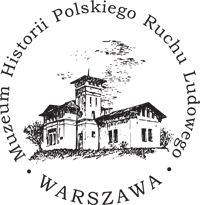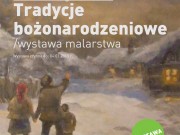/painting exhibition
opening: 28.11.2014 (Friday), at 6 pm to 8 pm
exhibition open until: 04.01.2015
Christmas themes are present in the painting, also in Polish, from the early Middle Ages.
In the initial phase dominated by images of scenes from the gospels and apocrypha. The centrality of the composition took Child in the manger, and next to him, Mary and Joseph. Inherent characters of the scene of Jesus' birth were animals - but not dominant today, the sheep, but usually an ox and a donkey. The total complemented luminous star (comet) and the angelic hosts. In more complex compositions appeared to the shepherds and the Magi ("Magi from the East"). All the characters represent certain roles and have strong symbolic marked.
Often depicted also the birth of Jesus in the broader context of his earthly mission on one canvas scene were his place of birth, Passion on the Cross and the Resurrection.
Over the centuries, the nature of painting, Christmas has changed. Most notable was the transfer of the scene of Jesus' birth from the cave to the shed or home. A very important transformation, content was getting stronger while highlighting the role of Mary, including her emotional connection with the Child - apart from religious symbolism increasing role begins to play the psychology of desire devotion indexable form. The Baroque painting presents a great accumulation of motifs of angels and shepherds - increasing the number of characters and care of their presentation.
The emergence in the early twentieth century. Abstract painting, fascination with new forms of expression, moving away from figurative representations - in effect painting associated with Christmas is the most current circle of folk art and unprofessional. As a result of his motifs enriched by the presentation of folk customs of Christmas traditions. This does not change the fact that the subject of Christmas remains extremely important also in the mainstream of Polish painting. Proof of this are the works gathered in the exhibition at CLZ.
The exhibition consists of 30 works in nature referring to the tradition of Polish folk painting. The work is a kind of cross-section of Christmas traditions in geographical terms - because artists represent a variety of regions including Polish and Podlasie. In the historical sense as the oldest paintings of Stanislaw Prauss come from before 1915, and the earliest dating back to the early twenty-first century. And also differ in meaning in the art of painting from the watercolor prints.
The exhibition will present the work of Mariana Adamczyka, Reginy Balinow, Natanaeli Błażejczyk, Zbigniewa Budzyńskiego, Małgorzaty Czernik-Zagdańska, Swietłany Franko, Piotra Gagana, Antoniego Gawińskiego, Stanisława Gibińskiego, Edwarda Habdasa, Michała Ichnowskiego, Michała Janczuka, Stanisława Kurek, Teodory Kurek, Macieja Milewskiego, Marii Najdek, Stanisława Praussa, Wandy Romeyko, Andrzeja Tryzno, Barbary Wyczółkowskiej- Milewskiej.
The exhibition is on loan from the collections of Museum of the Polish Peasant Movement in Warsaw.

Partner:

Museum of the Polish Peasant Movement
Warsaw is an organizational unit
Provincial Government of the Mazowieckie














